Distances and component sizes
in scale-free random graphs
Joost Jorritsma

PhD Defense
Information spreading in networks






Mathematical models for information spreading








Problem: Unknown network dynamics involved
Solution: Random graph
Goals: Understand networks
+ spreading model













Problem:
Unknown network dynamics involvedSolution:
Random graphGoals:
Understand networks Fascinating math
+ spreading model







1
1
1
1
1
1
1
1
1
1
1
1
1
1
1
1






Information spread: three related parts


Distances


Component sizes
Intervention strategies


MODELS
RESULTS Fascinating, because...
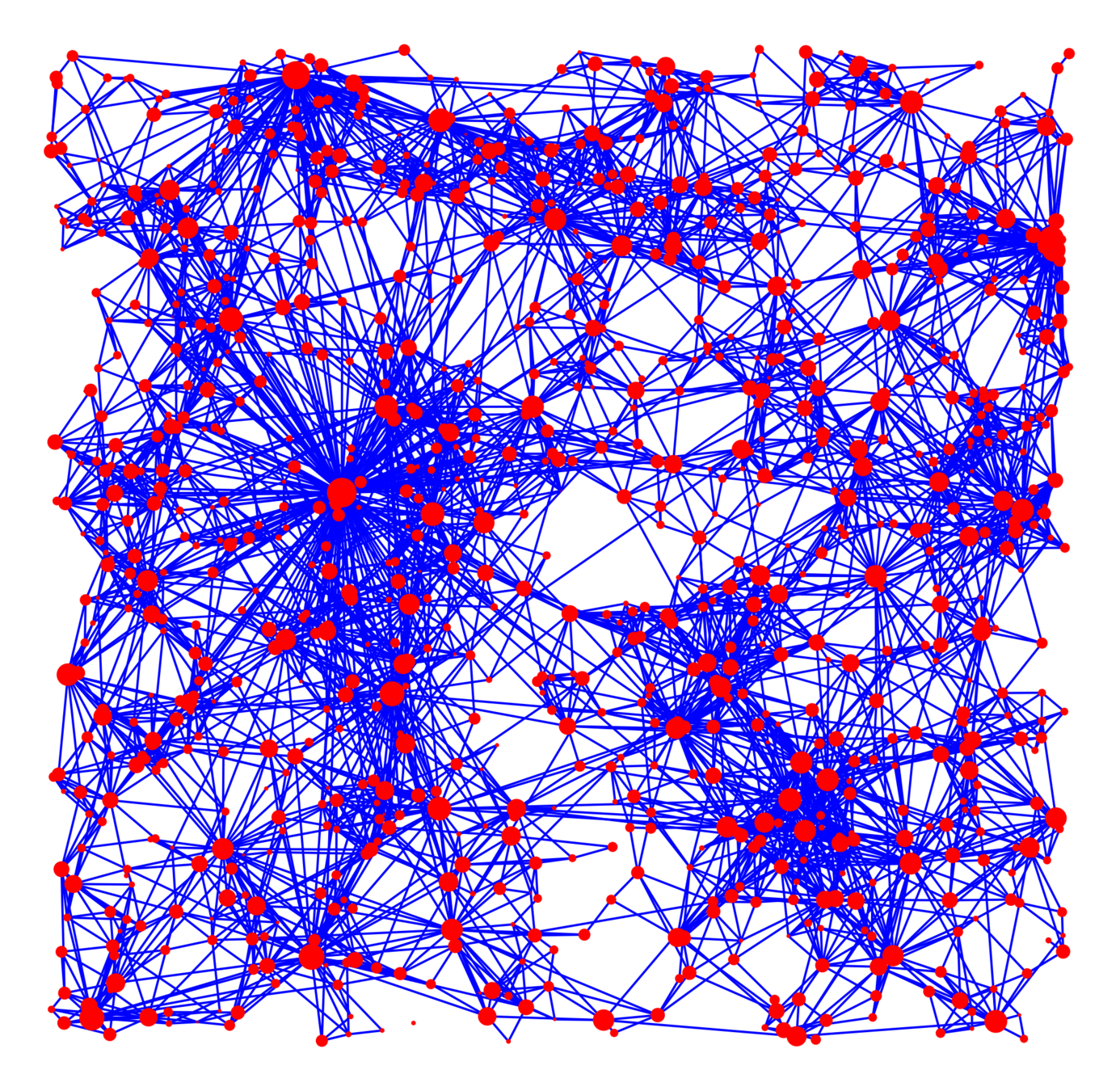



FINAL SIZE
Internet: a growing network of routers and servers
~1969: 2 connected sites
Time
~1989: 0.5 million users
~2023: billions of devices
- [Faloutsos, Faloutsos & Faloutsos, '99]:
-
Short average distance:
Quick spread of information
-
Short average distance:



~1999: 248 million users


Distance evolution in a growing network
1999
\(\mathrm{dist}_{\color{red}{'99}}(u_{'99}, v_{'99}) = 4\)
2005
\(\mathrm{dist}_{{\color{red}'05}}(u_{'99}, v_{'99}) = 3\)
2023
\(\mathrm{dist}_{{\color{red}'23}}(u_{'99}, v_{'99}) = 2\)
21 possible networks
Attachment rule:
Favour connecting to high-degree vertices
2005
\(\phantom{\mathrm{dist}_{{\color{red}'05}}(u_{'99}, v_{'99}) = 3}\)
Distance evolution


Distance evolution: hydrodynamic limit
Theorem [J., Komjáthy '22]. Assume \(c_\tau<0\).
Let \(t'=T_t(a):=t\exp\big(\log^a(t)\big)\) for \(a\in[0,1]\), then
$$ \mathbb{P}\bigg(\sup_{a\in[0,1]} \left| \frac{\mathrm{dist}_{T_t(a)}(U_t, V_t)}{\log\log(t)} - (1-a)\frac{4}{|\log(\tau-2)|}\right|>0.001\bigg)\longrightarrow 0.$$

Theorem [J., Komjáthy '22]. Assume \(c_\tau<0\).
Let \(t'=T_t(a):=t\exp\big(\log^a(t)\big)\) for \(a\in[0,1]\), then
$$ \phantom{\mathbb{P}\bigg(}\phantom{\sup_{a\in[0,1]}} \left| \frac{\mathrm{dist}_{T_t(a)}(U_t, V_t)}{\log\log(t)} - (1-a)\frac{4}{|\log(\tau-2)|}\right|\phantom{>0.001\bigg)\phantom{\longrightarrow} 0.}$$
Theorem [J., Komjáthy '22]. Assume \(c_\tau<0\).
Let \(\phantom{t'=T_t(a):=t\exp\big(\log^a(t)\big)}\) for \(\phantom{a\in[0,1]}\), then
$$ \phantom{\sup_{a\in[0,1]} \left| \frac{\mathrm{dist}_{T_t(a)}(U_t, V_t)}{\log\log(t)} - (1-a)\frac{4}{|\log(\tau-2)|}\right|\overset{\mathbb{P}}{\longrightarrow} 0.}$$
Theorem [J., Komjáthy '22]. Assume \(c_\tau<0\).
Let \(t'=T_t(a):=t\exp\big(\log^a(t)\big)\) for \(a\in[0,1]\), then
$$ \phantom{\mathbb{P}\bigg(}\phantom{\sup_{a\in[0,1]}} \left| \frac{\mathrm{dist}_{T_t(a)}(U_t, V_t)}{\log\log(t)} - \phantom{(1-a)\frac{4}{|\log(\tau-2)|}}\right|\phantom{>0.001\bigg)\longrightarrow 0.}$$


-
Dynamics in PAMs.
-
Stochastic process becomes deterministic;
-
Fast spreading among influentials;





Fascinating, because
Theorem [J., Komjáthy '22]. Assume \(c_\tau<0\).
Let \(t'=T_t(a):=t\exp\big(\log^a(t)\big)\) for \(a\in[0,1]\), then
$$ \mathbb{P}\bigg(\sup_{a\in[0,1]} \left| \frac{\mathrm{dist}_{T_t(a)}(U_t, V_t)}{\log\log(t)} - (1-a)\frac{4}{|\log(\tau-2)|}\right|>0.001\bigg)\phantom{\longrightarrow 0.}$$
Information spreading on random graphs


Distances


Component sizes
Intervention strategies


MODELS




FINAL SIZE
RESULTS Fascinating, because...



Real networks contain many triangles!


FINAL SIZE
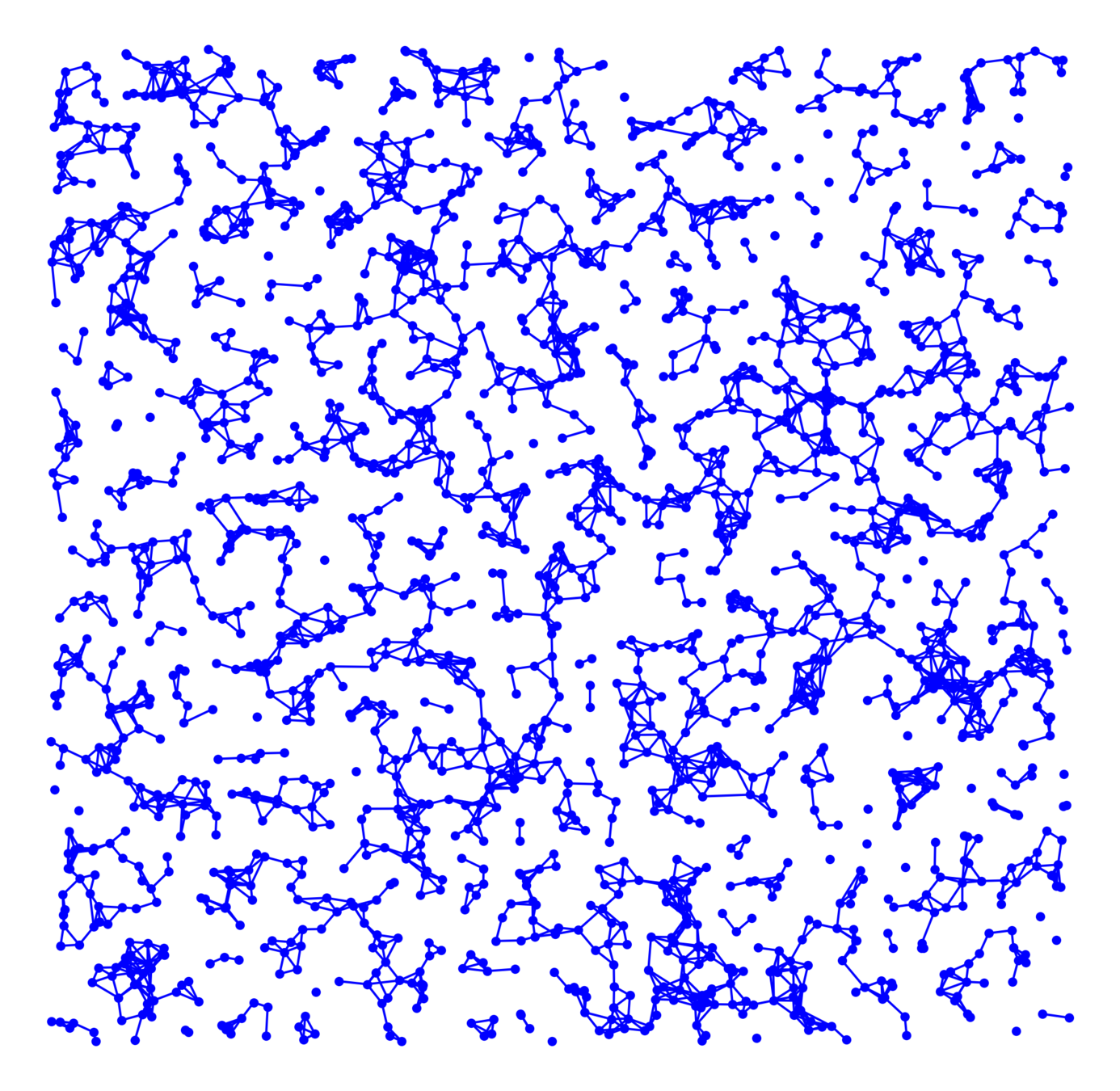
Do real networks look like this?
Kernel-based spatial random graphs
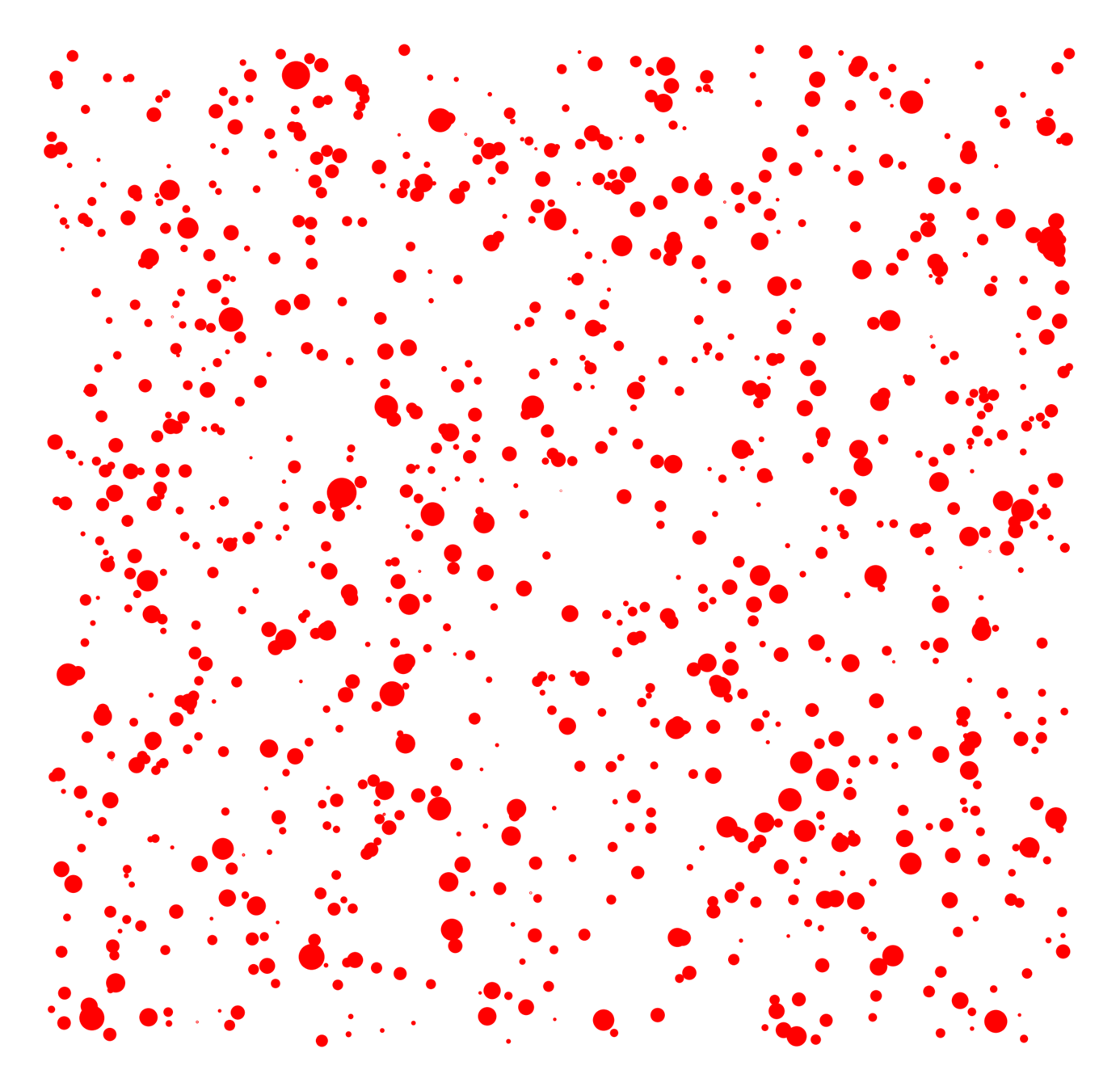

Only four parameters
Vertex set
- Spatial locations,
- i.i.d. (power-law) weights
Edge more likely if
- Spatially nearby,
- High weight

FINAL SIZE
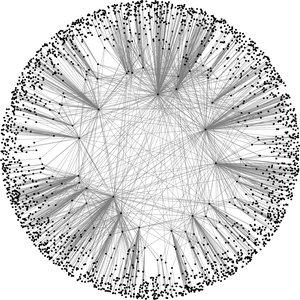

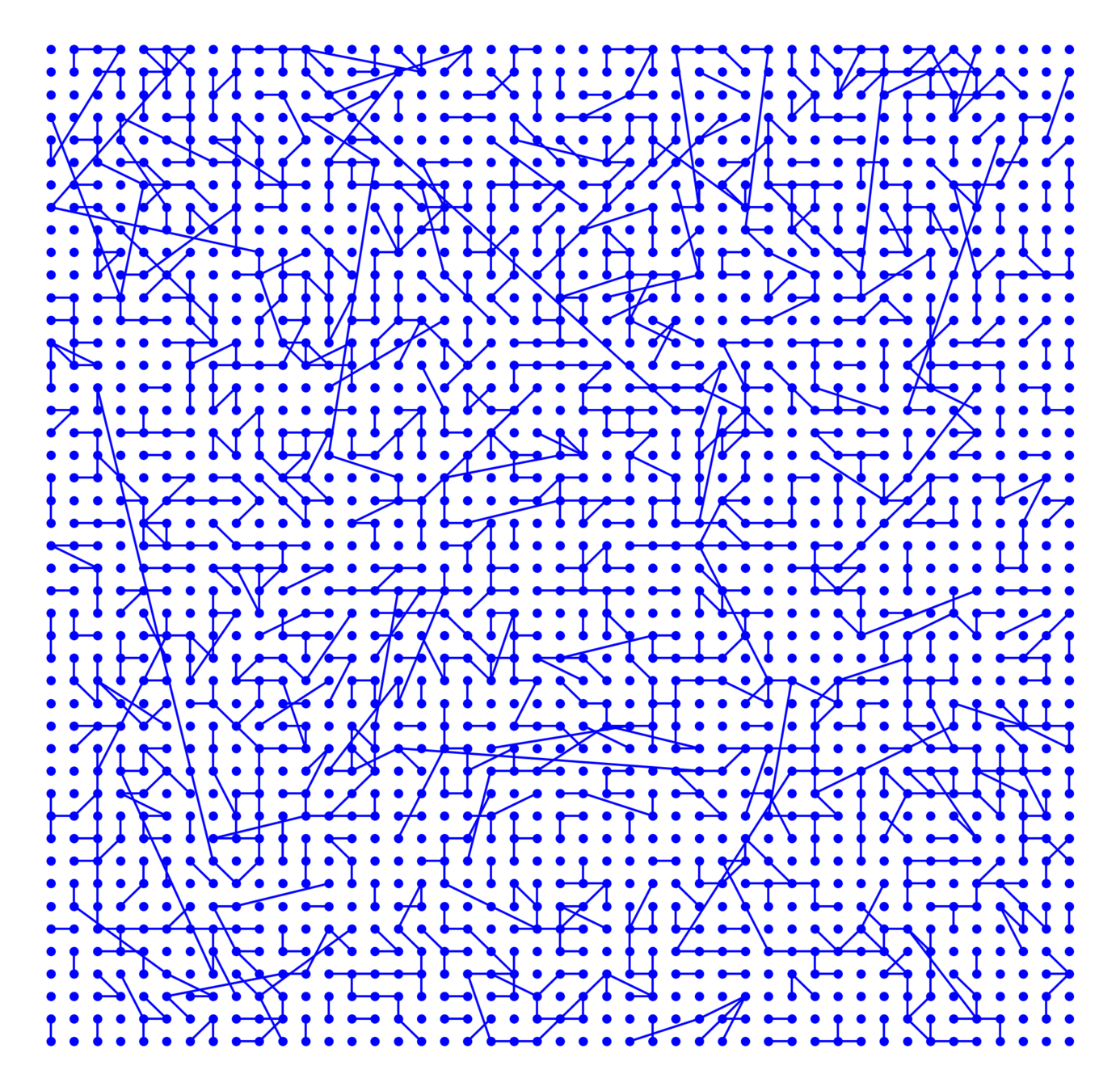
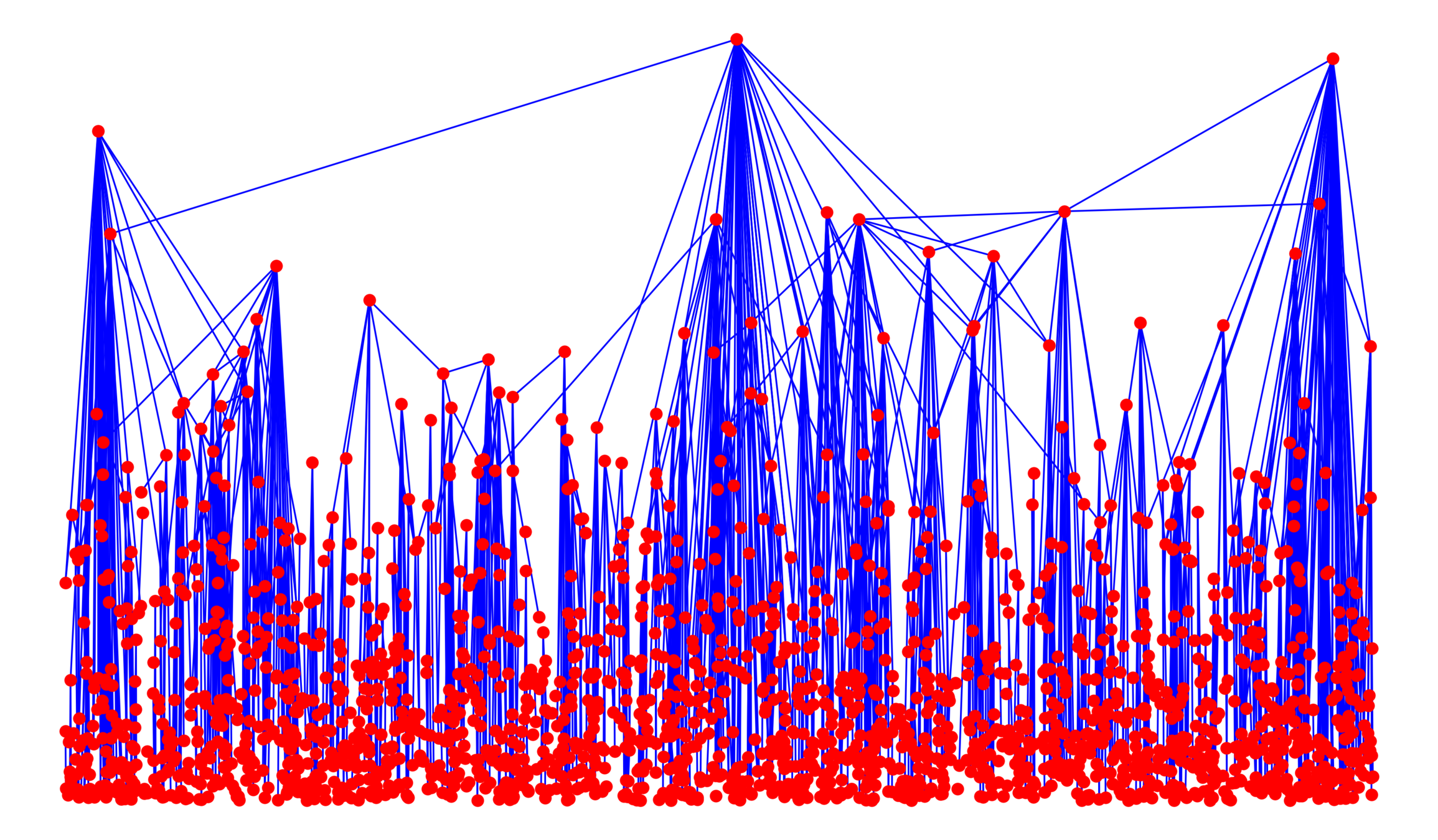
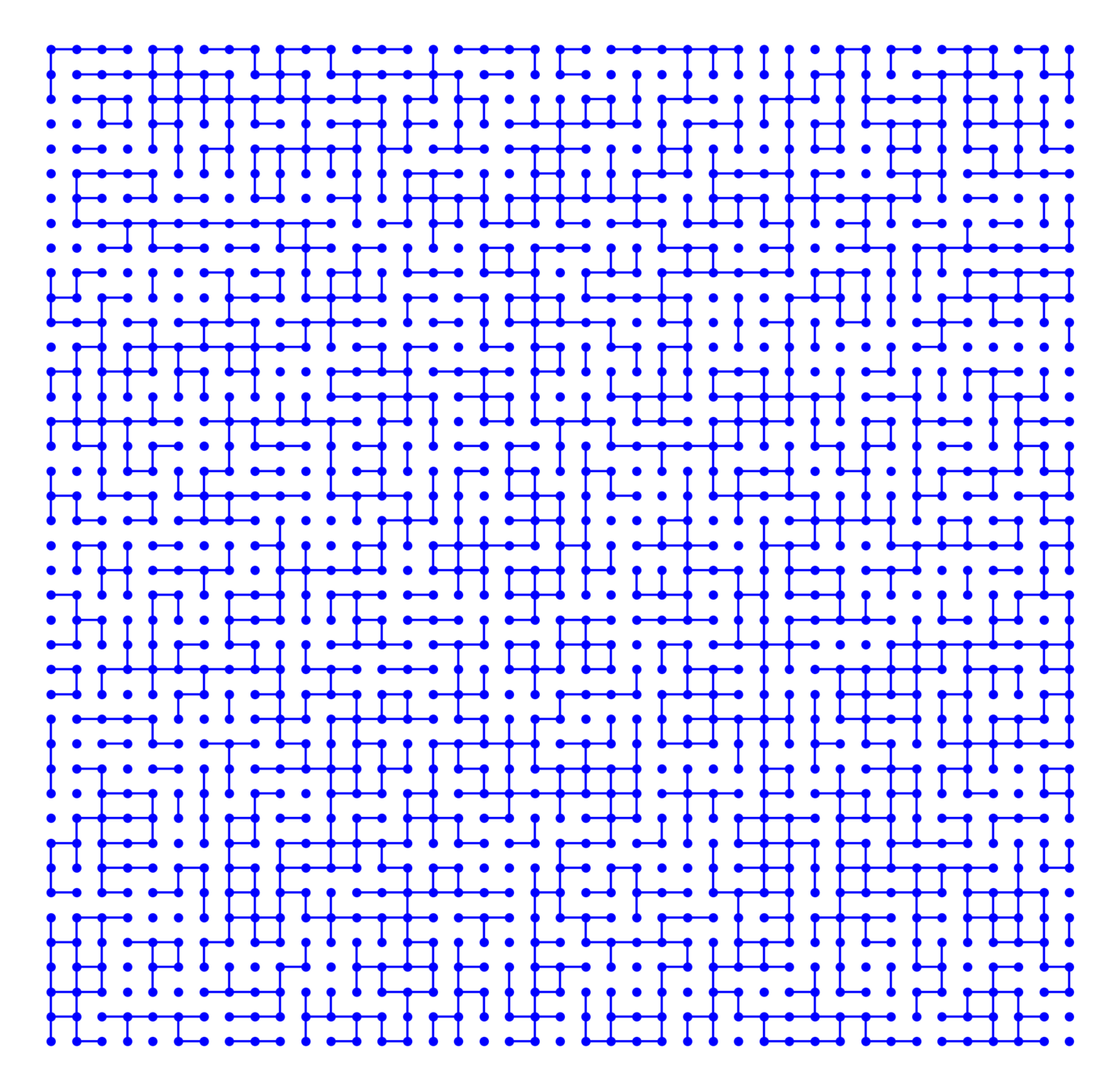


FINAL SIZE














Connected components in random graphs










FINAL SIZE



Connected components in spatial graphs
- Largest component \({\color{red}\mathcal{C}_n^{(1)}}\):
- Component of the origin \({\color{green}\mathcal{C}_n(0)}\):
- Second-largest component \({\color{blue}\mathcal{C}_n^{(2)}}\):
Three questions

FINAL SIZE



Connected components in spatial graphs
-
Structural information.
-
3 related quantities;
-
Not only ;





Fascinating, because

FINAL SIZE
Answers: there is \(\zeta\in(0,1)\) s.t.
- Largest component \({\color{red}\mathcal{C}_n^{(1)}}\):
- Component of the origin \({\color{green}\mathcal{C}_n(0)}\):
- Second-largest component \({\color{blue}\mathcal{C}_n^{(2)}}\):

Information spreading on random graphs


Distances


Component sizes
Intervention strategies


MODELS




FINAL SIZE

RESULTS Fascinating, because...


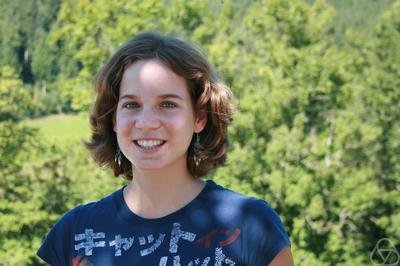










Distances and component sizes
in scale-free random graphs
Joost Jorritsma
PhD Defense
Distances and component sizes
in scale-free random graphs












and other exciting projects







TOTAL SIZE




[Krioukov et al., '10]: Hyperbolic random graph
Good model for real networksKernel-based spatial random graphs


Little known about components.
-
Three sources of randomness;
-
Generalizes previous models;





Fascinating, because
Four parameters to interpolate/switch
Vertex set
- Spatial locations,
- i.i.d. (power-law) weights
Edge more likely if
- Spatially nearby,
- High weight


TOTAL SIZE
PhD Defense
By joostjor
PhD Defense
- 647



